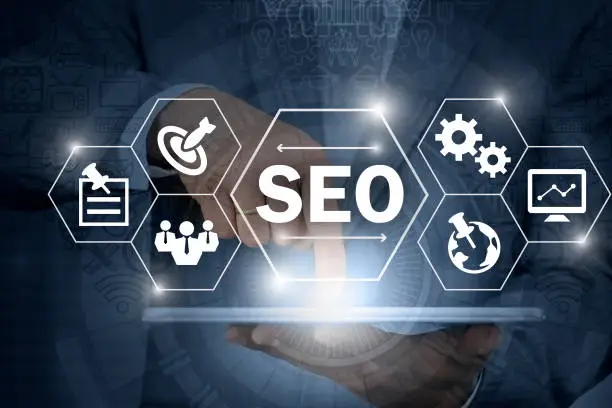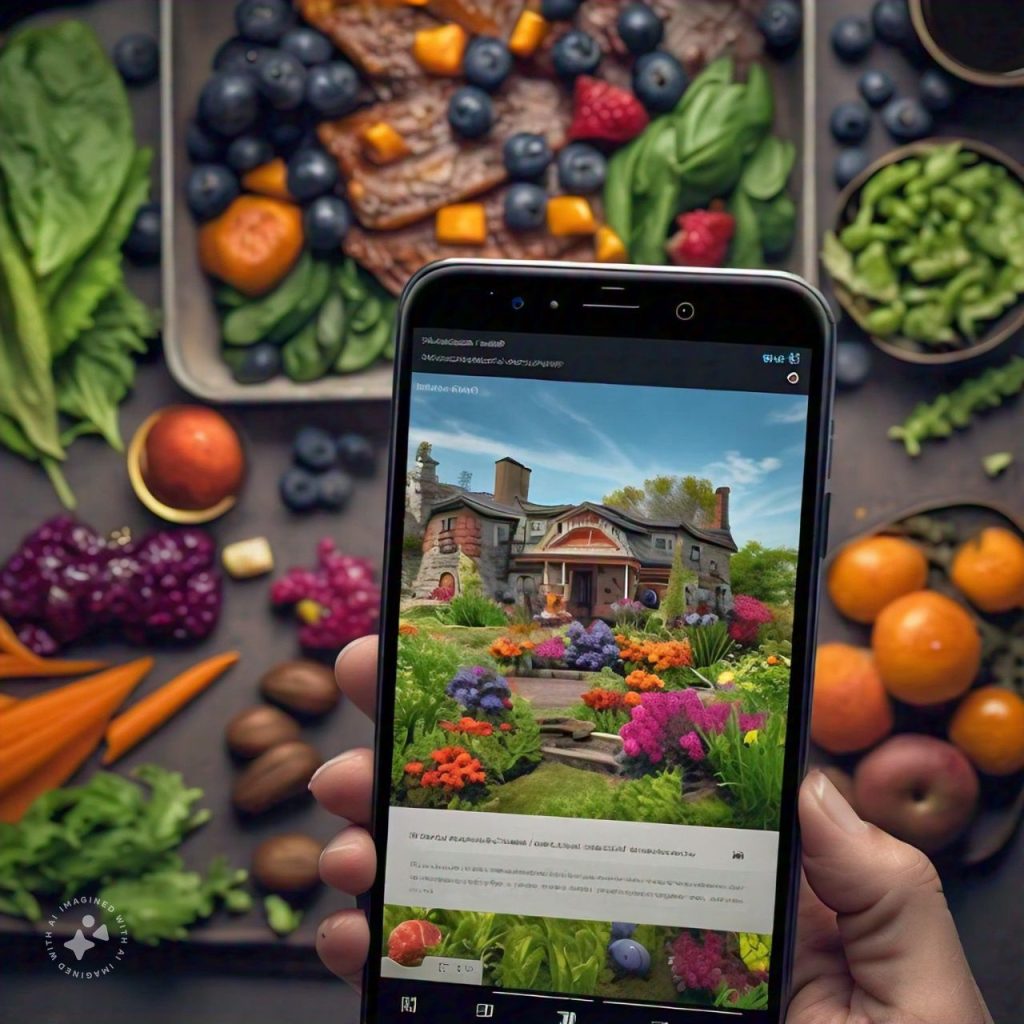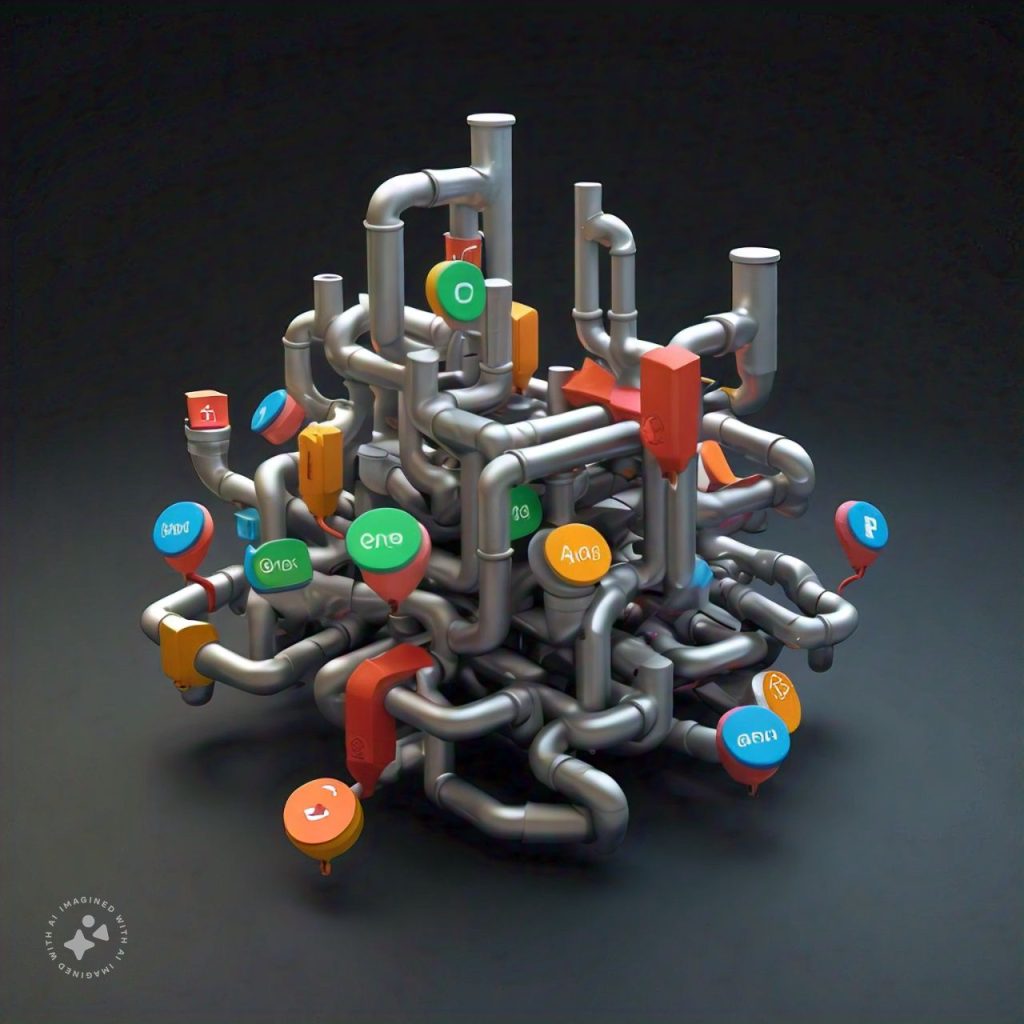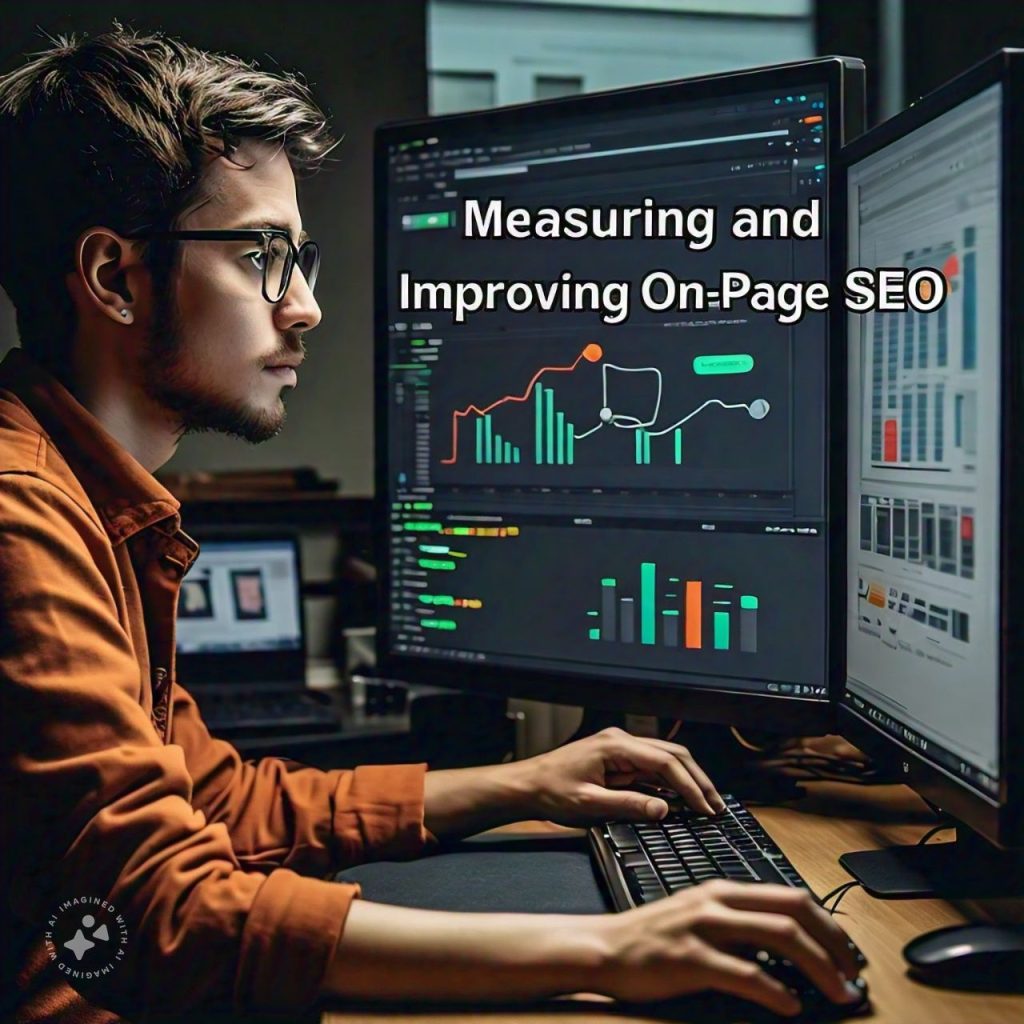Mastering On-Page SEO: Best Practices for 2024

Our website’s success hinges on its ability to be found. This is where mastering on-page SEO comes into play. Mastering on-page SEO involves optimizing individual web pages to rank higher in search engine results pages (SERPs). It’s a crucial component of any successful digital marketing strategy, especially in 2024 as the SEO landscape continues to evolve.”
What worked a few years ago might not work today. In fact, it might even harm your rankings. That’s why it’s essential to stay updated with the latest on-page SEO best practices. This guide is designed to help you do just that. We’ll delve into the most effective on-page SEO strategies for 2024. From keyword placement to HTML SEO optimization, we’ve got you covered.
Whether you’re a seasoned SEO specialist or a beginner, this guide will provide valuable insights. We’ll explore the core elements of on-page SEO, advanced keyword research, and content optimization techniques. We’ll also discuss the technical aspects of on-page SEO and how to enhance user experience for SEO.
Moreover, we’ll look at how to prepare for the rise of voice search and local SEO. Finally, we’ll discuss how to measure and improve your on-page SEO efforts. By the end of this guide, you’ll be well-equipped to master on-page SEO in 2024. Let’s dive in.
Understanding On-Page SEO in 2024
On-page SEO in 2024 is not just about stuffing keywords into your content. It’s about creating high-quality, relevant content that satisfies user intent.

The main focus is optimizing your web pages to provide a seamless user experience. It’s about staying updated with the latest Google algorithm updates and adapting your strategies accordingly. In essence, on-page SEO in 2024 is about understanding what your audience wants and delivering it in the most effective way possible.
The Evolution of On-Page SEO
On-page SEO has come a long way since its inception. In the early days, it was all about keyword stuffing and spammy backlink practices. But search engines have become smarter. They now prioritize user experience and content relevance over everything else. This shift has made on-page SEO more complex, but also more rewarding for those who master it.
Why On-Page SEO is More Crucial Than Ever
On-page SEO is more crucial than ever for several reasons. Firstly, the online competition is fiercer than ever. With millions of websites vying for the top spots in SERPs, on-page SEO can give you the edge you need. Secondly, users are becoming more discerning. They want quick, accurate answers to their queries. On-page SEO helps you deliver just that, improving your website’s visibility and credibility.
Thirdly, Google’s algorithms are constantly evolving. They’re becoming better at understanding and rewarding high-quality, relevant content. By mastering on-page SEO, you can stay ahead of these changes and ensure your website ranks well. Finally, on-page SEO is crucial for driving targeted traffic to your website. By optimizing for relevant keywords, you can attract users who are interested in what you have to offer. This can lead to higher conversion rates and increased revenue for your business.
Core Elements of On-Page SEO
On-page SEO involves several core elements. Each of these elements plays a crucial role in how search engines understand and rank your web pages.
These elements include title tags, meta descriptions, header tags, URLs, and images. By optimizing these elements, you can significantly improve your website’s visibility and ranking. Let’s delve deeper into each of these core elements and understand how to optimize them effectively.
Title Tags and Their Impact on Rankings
Title tags are one of the most important on-page SEO elements. They provide a concise summary of your web page’s content. Search engines use title tags to understand what your page is about. Users see title tags as the clickable headline in SERPs.

A well-optimized title tag can significantly improve your click-through rate.
Here are some best practices for optimizing title tags:
- Keep your title tags within 50-60 characters.
- Include your target keyword towards the beginning.
- Make your title tags compelling to attract clicks.
- Avoid keyword stuffing.
- Make each title tag unique.
Meta Descriptions That Get Clicks
Meta descriptions are another crucial on-page SEO element. They provide a brief summary of your web page’s content. While meta descriptions don’t directly impact rankings, they can significantly influence click-through rates. A compelling meta description can entice users to click on your page in SERPs.
Here are some best practices for writing meta descriptions:
- Keep your meta descriptions within 150-160 characters.
- Include your target keyword.
- Provide a clear, concise summary of your page’s content.
- Use a compelling call-to-action.
- Make each meta description unique.
Header Tags and Content Structure
Header tags (H1, H2, H3, etc.) play a crucial role in content structure. They help break up your content into digestible sections. Search engines use header tags to understand the hierarchy and structure of your content. A well-structured content with proper header tags can improve user experience and SEO.
Here are some best practices for using header tags:
- Use only one H1 tag per page.
- Include your target keyword in the H1 tag.
- Use H2 and H3 tags for subheadings.
- Make your headers descriptive and relevant.
- Use keywords in subheadings where it makes sense.
URLs and User Experience
URLs are an often-overlooked aspect of on-page SEO. A well-structured URL can improve user experience and SEO. It can help users and search engines understand what your page is about.
Here are some best practices for optimizing URLs:
- Keep your URLs short and simple.
- Include your target keyword.
- Use hyphens to separate words.
- Avoid using special characters or spaces.
- Make your URLs descriptive and relevant.
Image Optimization: Alt Text and Beyond
Images can significantly enhance user experience. But search engines can’t “see” images. They rely on alt text to understand what an image is about. By optimizing your images with relevant alt text, you can improve your SEO.
Here are some best practices for image optimization:
- Use relevant, high-quality images.
- Include your target keyword in the alt text.
- Keep your alt text descriptive and concise.
- Use a relevant file name for your image.
- Compress your images to improve page load speed.
Advanced Keyword Research and Placement
Keyword research is the backbone of on-page SEO. It involves identifying the right keywords that your target audience is using to search for information.

In 2024, keyword research has become more sophisticated. It’s not just about finding high-volume keywords. It’s about understanding user intent and finding long-tail keywords that match that intent. Let’s delve deeper into how to find and select the right keywords in 2024 and how to place them strategically for maximum impact.
Finding and Selecting the Right Keywords in 2024
Finding and selecting the right keywords is a critical step in on-page SEO. It involves understanding your audience, their search behavior, and the language they use.

In 2024, it’s not enough to target high-volume keywords. You need to target long-tail keywords that match the user intent.
Here are some best practices for finding and selecting the right keywords in 2024:
- Use keyword research tools to find keyword ideas.
- Understand the search intent behind each keyword.
- Target long-tail keywords that match the user intent.
- Look at the competitiveness of each keyword.
- Consider the relevance of each keyword to your business.
Strategic Keyword Placement for Maximum Impact
Once you have the right keywords, the next step is to place them strategically in your content. Keyword placement plays a crucial role in how search engines understand and rank your content.

But remember, keyword stuffing is a big no-no. It can lead to penalties from search engines.
Here are some best practices for strategic keyword placement:
- Include your target keyword in the title tag, meta description, and H1 tag.
- Use your target keyword in the first 100 words of your content.
- Use your target keyword naturally throughout your content.
- Include your target keyword in the alt text of images.
- Use your target keyword in the URL of your page.
Content Optimization Techniques
Content optimization is a key aspect of on-page SEO. It involves making your content more attractive, useful, and actionable for users.

In 2024, content optimization is not just about including keywords. It’s about creating high-quality content that satisfies user intent. It’s about using LSI keywords and synonyms to make your content more relevant. And it’s about using multimedia to engage your audience and keep them on your page longer.
Crafting Quality Content That Ranks
Creating high-quality content is crucial for on-page SEO. But what does high-quality content mean?

In 2024, high-quality content is content that is:
- Relevant to your audience.
- Informative and provides value.
- Well-researched and accurate.
- Easy to read and understand.
- Engaging and encouraging interaction.
Remember, content is not just for search engines. It’s for your audience. So, always prioritize your audience when creating content.
Utilizing LSI Keywords and Synonyms
LSI (Latent Semantic Indexing) keywords are synonyms and related keywords to your main keyword. They help search engines understand the context and relevance of your content.
In 2024, using LSI keywords and synonyms is a best practice for on-page SEO.
Here are some tips for using LSI keywords and synonyms:
- Use LSI keywords naturally in your content.
- Don’t overuse LSI keywords.
- Use LSI keywords in your title, headings, and meta description.
Remember, the goal is to make your content more relevant and useful for your audience.
The Role of Multimedia in Content Engagement
Multimedia elements like images, videos, and infographics can make your content more engaging. They can help you explain complex concepts in a simple way.
In 2024, using multimedia in your content is a best practice for on-page SEO.
Here are some tips for using multimedia in your content:
- Use high-quality images and videos.
- Use multimedia that is relevant to your content.
- Optimize your multimedia elements for SEO.
Remember, the goal is to engage your audience and keep them on your page longer.
Technical Aspects of On-Page SEO
On-page SEO is not just about content and keywords. It also involves technical aspects that can significantly impact your site’s performance.

In 2024, the technical aspects of on-page SEO include site speed, mobile optimization, and schema markup. These elements play a crucial role in improving your site’s visibility and user experience. Let’s delve into each of these aspects in more detail.
Site Speed: Making Your Site Lightning Fast
Site speed is a critical factor in on-page SEO. It affects your site’s user experience and search engine ranking.

In 2024, making your site lightning fast is a best practice for on-page SEO.
Here are some tips to improve your site speed:
- Use a reliable hosting provider.
- Optimize your images and multimedia elements.
- Minimize HTTP requests.
- Enable browser caching.
- Minimize and compress your CSS and JavaScript files.
Remember, a fast-loading site can improve your user experience and reduce your bounce rate.
Mobile Optimization: A Necessity in 2024
Mobile optimization is no longer optional. It’s a necessity.

In 2024, having a mobile-optimized site is a best practice for on-page SEO.
Here are some tips for mobile optimization:
- Use a responsive design.
- Make sure your site loads quickly on mobile devices.
- Make your content easy to read on small screens.
- Make your buttons and links easy to click on small screens.
- Test your site on various mobile devices.

Remember, a mobile-optimized site can improve your user experience and search engine ranking.
Schema Markup and Structured Data
Schema markup and structured data can enhance your search engine visibility. They can help search engines understand your content better.

In 2024, using schema markup and structured data is a best practice for on-page SEO.
Here are some tips for using schema markup and structured data:
- Use the correct schema markup for your content.
- Test your schema markup with Google’s Structured Data Testing Tool.
- Keep your schema markup up-to-date.
Remember, schema markup and structured data can enhance your search engine visibility and click-through rate.
Enhancing User Experience for SEO
User experience is a critical factor in on-page SEO. It can significantly impact your site’s visibility and ranking.

In 2024, enhancing user experience is a best practice for on-page SEO. This involves improving your site’s navigational structure, internal linking, and user engagement. Let’s delve into each of these aspects in more detail.
Navigational Structure and Breadcrumbs
A clear and intuitive navigational structure can enhance your user experience. It can help users find the information they need quickly and easily.

In 2024, having a clear navigational structure is a best practice for on-page SEO.
Here are some tips for improving your navigational structure:
- Use a logical and intuitive menu structure.
- Use clear and descriptive labels for your menu items.
- Include a search function for easy navigation.
- Use breadcrumbs to help users understand their location on your site.

Remember, a clear navigational structure can enhance your user experience and search engine ranking.
Internal Linking Strategies
Internal linking is a powerful on-page SEO strategy. It can help search engines understand your content and improve your site’s visibility.

In 2024, effective internal linking is a best practice for on-page SEO.
Here are some tips for internal linking:
- Use descriptive anchor text for your internal links.
- Link to your most important pages from your homepage.
- Use a logical and hierarchical linking structure.
- Avoid excessive internal linking.
Remember, effective internal linking can improve your site’s visibility and user experience.
Reducing Bounce Rate and Increasing Dwell Time
Reducing your bounce rate and increasing dwell time can improve your on-page SEO. They can enhance your user experience and search engine ranking.

In 2024, reducing bounce rate and increasing dwell time is a best practice for on-page SEO.
Here are some tips for reducing bounce rate and increasing dwell time:
- Provide high-quality and relevant content.
- Make your site easy to navigate.
- Use engaging multimedia elements.
- Use clear and compelling calls-to-action.
Remember, reducing bounce rate and increasing dwell time can enhance your user experience and search engine ranking.
On-Page SEO for Local and Voice Search
Local and voice search are two significant trends in SEO. They can greatly impact your site’s visibility and ranking.

In 2024, optimizing for local and voice search is a best practice for on-page SEO. This involves optimizing your site for local SEO and Google My Business, and preparing for the rise of voice search. Let’s delve into each of these aspects in more detail.
Optimizing for Local SEO and Google My Business
Local SEO can help your business appear in local search results. It can increase your visibility and attract more local customers. In 2024, optimizing for local SEO and Google My Business is a best practice for on-page SEO.
Here are some tips for local SEO and Google My Business optimization:
- Claim and verify your Google My Business listing.
- Provide accurate and up-to-date information about your business.
- Encourage customers to leave reviews and respond to them promptly.
- Use local keywords in your content and meta tags.
- Optimize your site for mobile to cater to local searchers on the go.
Remember, local SEO and Google My Business optimization can increase your visibility and attract more local customers.
Preparing for the Rise of Voice Search
Voice search is becoming increasingly popular. It can significantly impact your site’s visibility and ranking. In 2024, preparing for the rise of voice search is a best practice for on-page SEO.
Here are some tips for voice search optimization:
- Use conversational keywords and phrases in your content.
- Optimize your site for mobile, as most voice searches are done on mobile devices.
- Provide clear and concise answers to common questions in your content.
- Use structured data to help search engines understand your content.
- Optimize your local SEO, as many voice searches are local in nature.
Remember, voice search optimization can enhance your user experience and search engine ranking.
Measuring and Improving On-Page SEO
Measuring and improving on-page SEO is crucial. It helps you understand how well your strategies are working.

In 2024, using analytics and A/B testing is a best practice for on-page SEO. This involves tracking your on-page SEO success and continuously optimizing your strategies. Let’s delve into each of these aspects in more detail.

Using Analytics to Track On-Page SEO Success
Analytics can provide valuable insights into your on-page SEO performance. They can help you identify what’s working and what’s not.

In 2024, using analytics to track on-page SEO success is a best practice.
Here are some tips for using analytics effectively:
- Set up Google Analytics and Google Search Console for your site.
- Monitor your organic traffic, bounce rate, and average session duration.
- Track your keyword rankings and organic click-through rate.
- Analyze your top-performing pages and identify why they’re successful.
- Use the data to inform your on-page SEO strategies.
Remember, analytics can provide valuable insights into your on-page SEO performance.
A/B Testing and Continuous Optimization
A/B testing can help you refine your on-page SEO strategies. It involves testing two versions of a page to see which performs better.

In 2024, A/B testing and continuous optimization is a best practice for on-page SEO.
Here are some tips for effective A/B testing:
- Test one element at a time to accurately measure its impact.
- Use a significant sample size for reliable results.
- Run the test for a sufficient amount of time.
- Analyze the results and implement the winning version.
- Continuously test and optimize your pages for better results.
Remember, A/B testing can help you refine your on-page SEO strategies.
Conclusion: The Future of On-Page SEO
As we look ahead, the future of on-page SEO is promising. It continues to evolve, driven by advancements in technology and changes in user behavior.

In 2024, mastering on-page SEO will require a deep understanding of these changes. It will also require the ability to adapt and implement new strategies effectively. Let’s explore how you can stay ahead of on-page SEO trends and ensure your website’s success.
Staying Ahead of On-Page SEO Trends
Staying ahead of on-page SEO trends is crucial. It allows you to adapt your strategies and maintain your website’s visibility.

In 2024, staying ahead of on-page SEO trends is a best practice.
Here are some tips for staying ahead:
- Regularly read SEO blogs and follow industry experts.
- Attend SEO conferences and webinars.
- Test new strategies and techniques on your website.
- Monitor your competitors and learn from their successes and failures.
- Always be ready to adapt and evolve your strategies.
Remember, staying ahead of on-page SEO trends can ensure your website’s success.
Final Checklist of On-Page SEO Best Practices for 2024
As we conclude, let’s recap the on-page SEO best practices for 2024. This checklist can serve as a guide for your on-page SEO efforts.

Here are the key points to remember:
- Understand the importance of on-page SEO and stay updated with the latest trends.
- Optimize your title tags, meta descriptions, header tags, URLs, and images.
- Conduct advanced keyword research and place your keywords strategically.
- Create high-quality content and optimize it using LSI keywords and multimedia.
- Pay attention to the technical aspects of on-page SEO, like site speed and mobile optimization.
- Enhance user experience through effective navigational structure and internal linking.
- Prepare for local and voice search.
- Measure your on-page SEO success using analytics and continuously optimize your strategies.
Remember, mastering on-page SEO requires continuous learning and adaptation.
Stay updated with the latest trends and best practices, and you’ll be well on your way to SEO success in 2024.



